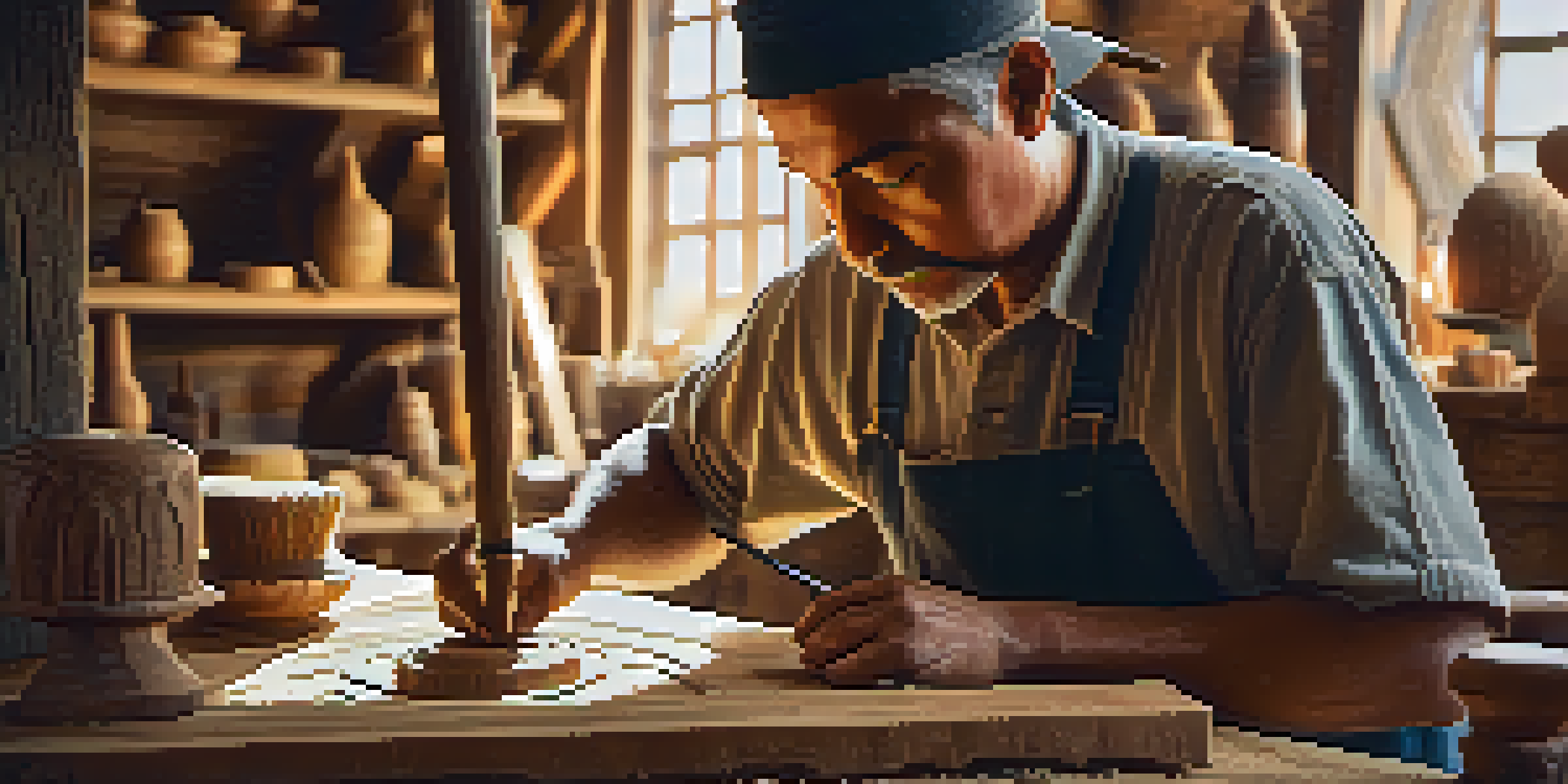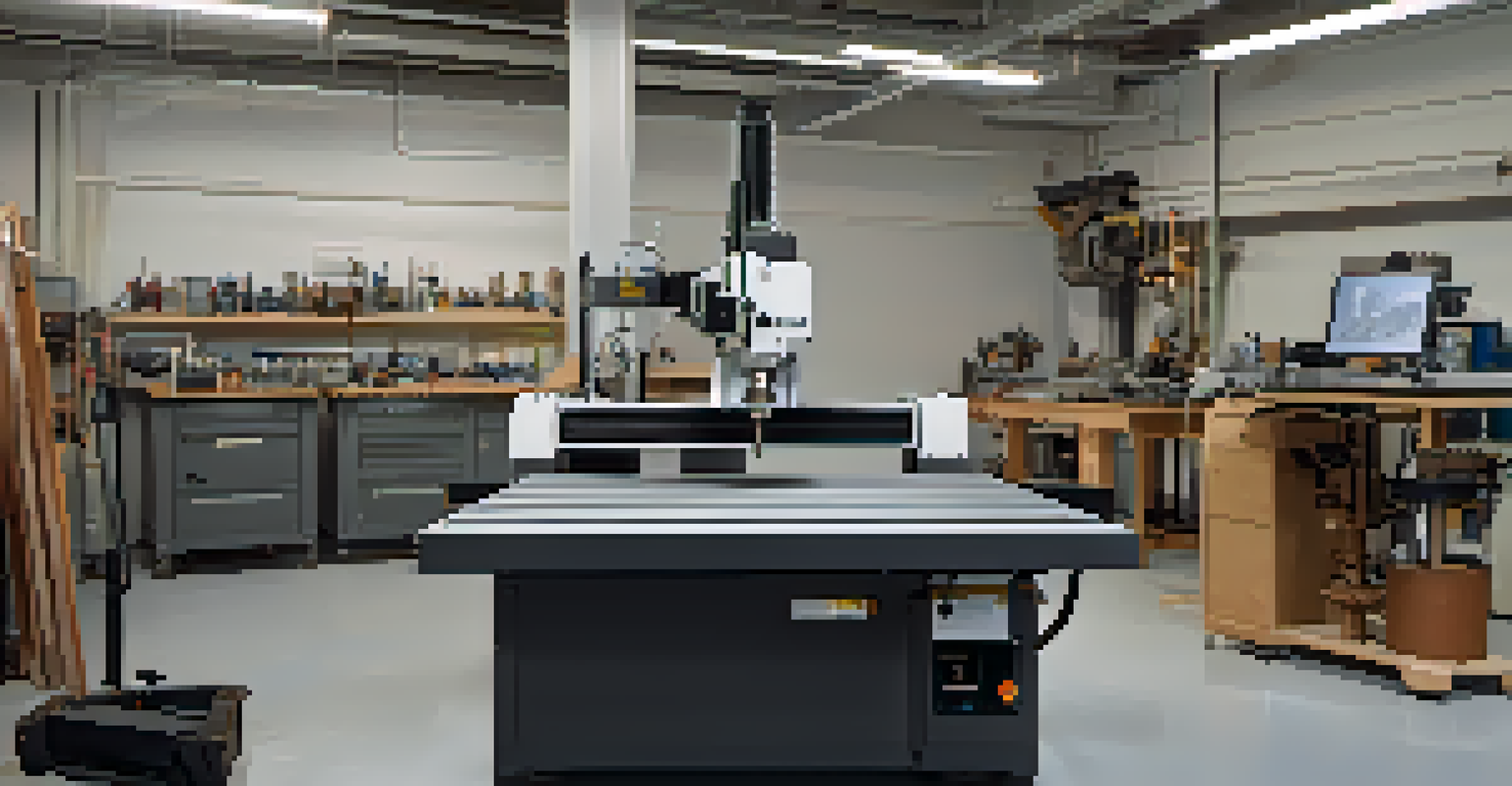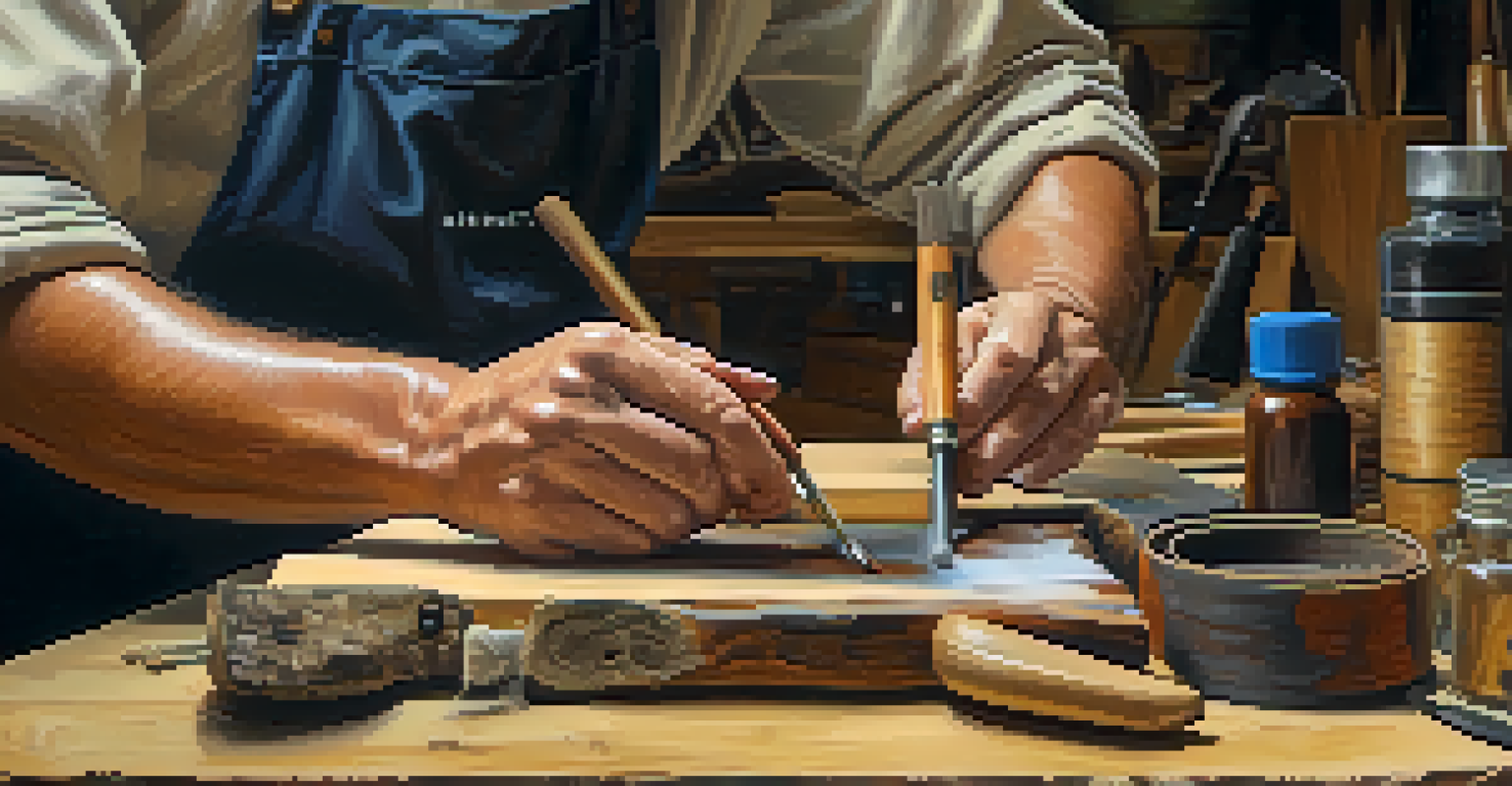Carving Techniques Used in Restoration of Artifacts Today

Understanding the Importance of Artifact Restoration
Artifact restoration plays a crucial role in preserving our cultural heritage. Without these efforts, many historical items would be lost to time and decay. Restorers not only aim to repair physical damage but also to maintain the integrity and historical context of the pieces.
Preservation of our cultural heritage is not merely an act of conservation; it is an act of honoring our past and enabling future generations to understand it.
Carving techniques are at the heart of this process, enabling restorers to match missing or damaged areas seamlessly. This requires a deep understanding of the original craftsmanship and materials used, ensuring that restored artifacts remain authentic and true to their origins.
Moreover, restoration isn’t just about fixing what’s broken; it’s about telling a story. Each artifact has a unique narrative, and skilled restorers work to honor that history while making it accessible for future generations.
Traditional Carving Techniques in Restoration
Many restorers still rely on traditional carving techniques that have been passed down through generations. These methods, such as hand carving and chiseling, allow for a level of detail and precision that's often unmatched by modern tools. Using these techniques, restorers can replicate intricate designs and textures found in the original artifacts.

For instance, when restoring wooden artifacts, a restorer might use a combination of gouges and chisels to recreate delicate floral patterns. This method not only preserves the artifact’s aesthetic but also respects the craftsmanship of the original artisans.
Preserving Cultural Heritage
Artifact restoration is essential for maintaining our cultural heritage by repairing historical items and preserving their stories.
However, traditional techniques require immense skill and patience. Restorers must be trained to understand the nuances of different materials and how they respond to various tools, which can make this a complex and time-consuming process.
Modern Tools Enhancing Restoration Techniques
While traditional methods remain vital, modern tools have significantly enhanced the restoration process. Technologies such as laser engraving and CNC (computer numerical control) machines allow for precise, reproducible results that were previously unimaginable. These tools can create intricate carvings that closely match the original artifact's details.
The best restoration is the one that is invisible; it should be seamless and allow the history of the artifact to shine through.
For example, a CNC machine can be programmed to replicate a damaged section of an artifact with incredible accuracy, making it easier for restorers to fill in gaps or replace missing pieces. This not only saves time but also increases the overall quality of the restoration.
However, the use of modern tools does not replace the need for traditional skills. Restorers must still possess a deep understanding of materials and artistic techniques to ensure that the final product is both visually and historically accurate.
The Role of Materials in Carving Techniques
Choosing the right materials for restoration is as crucial as the carving techniques employed. Restorers must select materials that are compatible with the original artifact, ensuring that the restoration is durable and aesthetically pleasing. This often involves sourcing similar wood types, pigments, or even resins that match the original composition.
For instance, when restoring a wooden sculpture, a restorer might choose a wood species that closely resembles the original. This not only helps in achieving visual continuity but also ensures that the piece behaves similarly to how it would have originally.
Balancing Tradition and Technology
Restorers blend traditional carving techniques with modern tools to enhance the accuracy and quality of their work.
Additionally, understanding the aging process of different materials is essential. Carving techniques can vary depending on whether the restoration is aimed at mimicking the look of aged wood or fresh carvings, prompting restorers to adapt their methods accordingly.
Ethical Considerations in Restoration Practices
Ethics play a significant role in artifact restoration, especially when it comes to carving techniques. Restorers must navigate the fine line between preserving an artifact's integrity and making it accessible for public appreciation. This often leads to debates about how much restoration is too much.
For example, while it's tempting to completely restore a damaged artifact to its original glory, doing so can erase valuable historical evidence. Restorers often adhere to the principle of minimal intervention, ensuring that any alterations made are reversible and do not compromise the artifact's authenticity.
Transparency is also critical; restorers are encouraged to document their processes and decisions. This way, future generations can understand the choices made during the restoration, preserving the artifact's history along with its physical form.
Training and Skills Required for Restoration Work
Becoming a skilled restorer requires extensive training and a diverse skill set. Many restorers begin their journey with a background in art, history, or archaeology, providing them with a strong foundation in the principles of conservation. They then often undergo specialized training in carving techniques and materials science.
Hands-on experience is invaluable, allowing restorers to hone their skills in real-world scenarios. Apprenticeships with seasoned restorers provide insights into the nuances of the craft, from selecting the right tools to understanding the intricacies of various materials.
Ethics in Restoration Practices
Ethical considerations are crucial in restoration, ensuring minimal intervention while maintaining the authenticity of artifacts.
Continuing education is also essential in this field. As technology evolves and new materials are developed, restorers must stay informed to implement the best practices in their work, ensuring that they are equipped to handle the challenges of modern restoration.
Future Trends in Carving Techniques for Restoration
Looking ahead, the future of carving techniques in artifact restoration is likely to be shaped by advancements in technology and materials. Innovations such as 3D printing are already starting to make waves, allowing restorers to create replacement parts that fit seamlessly into damaged artifacts. This technology can also help in visualizing restoration plans before any physical work begins.
Moreover, there's a growing emphasis on sustainable practices in restoration. As environmental concerns rise, restorers are increasingly seeking eco-friendly materials and methods that reduce waste and environmental impact. This shift may lead to new carving techniques that align with sustainability goals.

Ultimately, the future of artifact restoration will likely combine the best of both worlds: the precision of modern technology and the artistry of traditional craftsmanship. This blend will not only enhance the quality of restorations but also ensure that our cultural heritage continues to be preserved for generations to come.